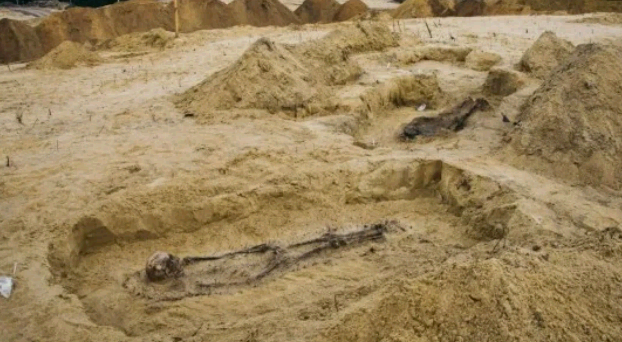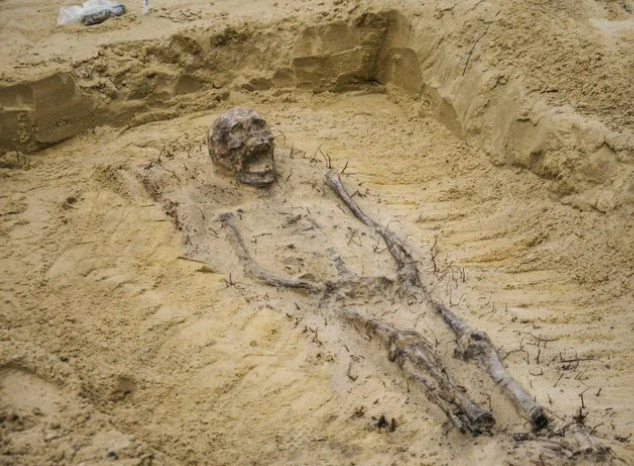16th-Century Child Skeletons With Coins In Their Mouths Found In Poland
Road crews in Poland stumbled upon a lost 16th-century cemetery, in which the vast majority of graves belong to children. Incredibly, some of the skeletons still have coins in their mouths, a tradition that dates back to ancient times.

The cemetery was discovered in a wooded area currently being cleared for Poland’s S19 motorway, which is part of the Via Carpathia road project to establish a north-south corridor running all the way from Greece to Lithuania.
A team from Arkadia Firma Archeologiczna (Arkadia Archaeological Company) was called in after construction crews stumbled upon human remains, reports The First News. The cemetery, which dates back to the late 16th and early 17 centuries, is located near the village of Jeżowe in southeast Poland.
Of the 115 individuals found at the site, around 70% to 80% were children, according to Poland’s General Directorate for National Roads and Motorways. The discovery corroborates both written accounts and local legends describing a cemetery dating back to this time period.
The bodies were carefully buried in sandy ground and oriented along an east-west axis. The dead were laid down on their backs with their hands positioned at their sides. Some skeletons were found to have coins inserted into their mouths.
“It’s certainly a sign of their beliefs,” Arkadia archaeologist Katarzyna Oleszek told The First News. “The coins are called obols of the dead or Charon’s obol. It is an old, pre-Christian tradition. But it’s been cultivated for a long time, even as late as the 19th century, it was practised by Pope Pius IX.”

This death ritual, which dates back to ancient Greece and Rome, represents a payment or bribe to Charon, the ferryman who delivers souls from the world of the living to the world of the dead.
The presence of these coins is certainly interesting from an anthropological perspective, but coins can also be used by archaeologists to timestamp a site. In this case, the coins were minted during the reign of Sigismund III Vasa, a Polish king who ruled from 1587 to 1632. Coins called boratynki were also found, which are associated with John II Casimir Vasa, who ruled from 1648 to 1668.
One of the more intriguing graves contains four children laid side-by-side with their heads all oriented in the same position, but with their legs and feet all meeting together. The leftmost child in the grave appears to have died at a very young age. It’s possible that these four individuals are closely related – perhaps siblings.